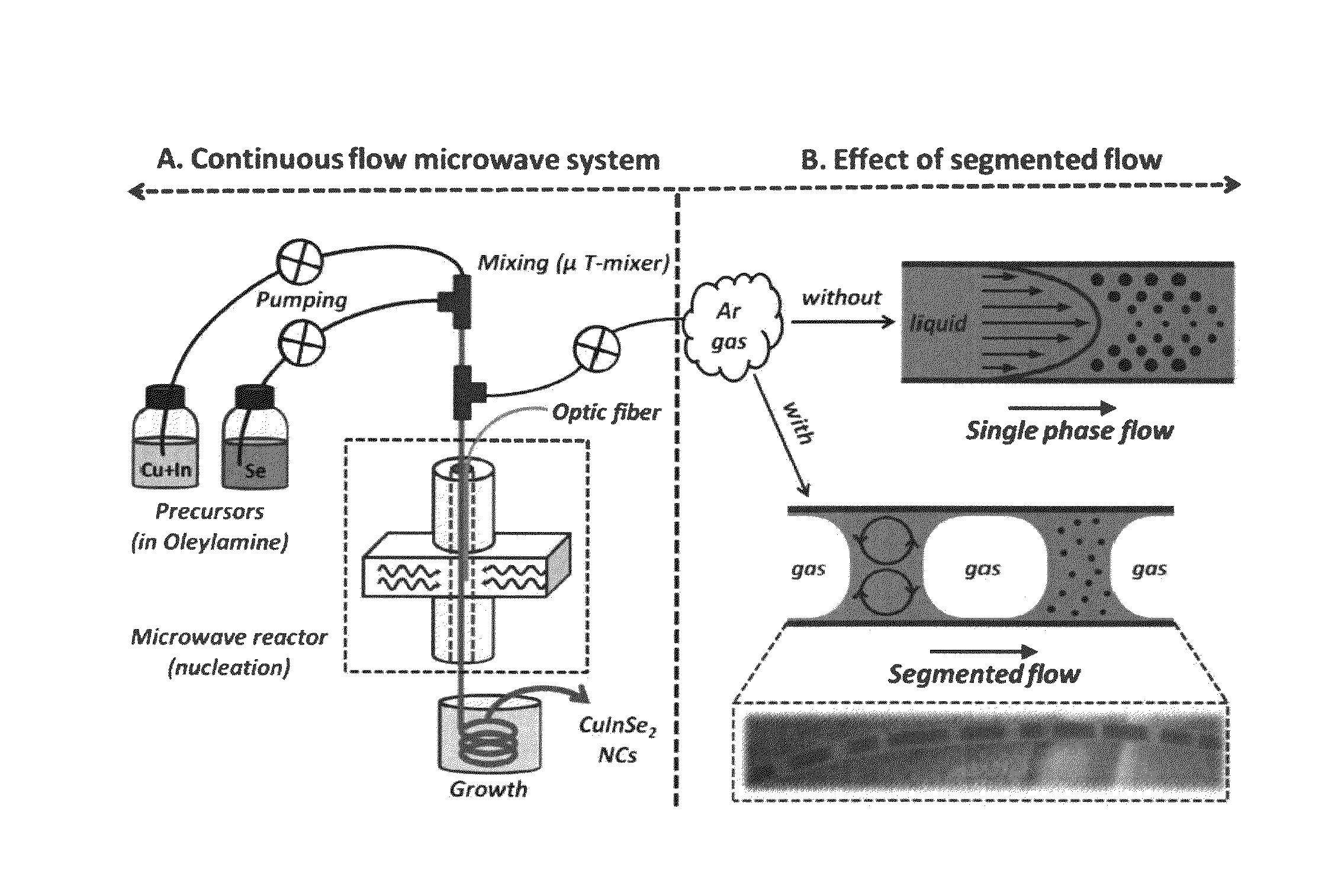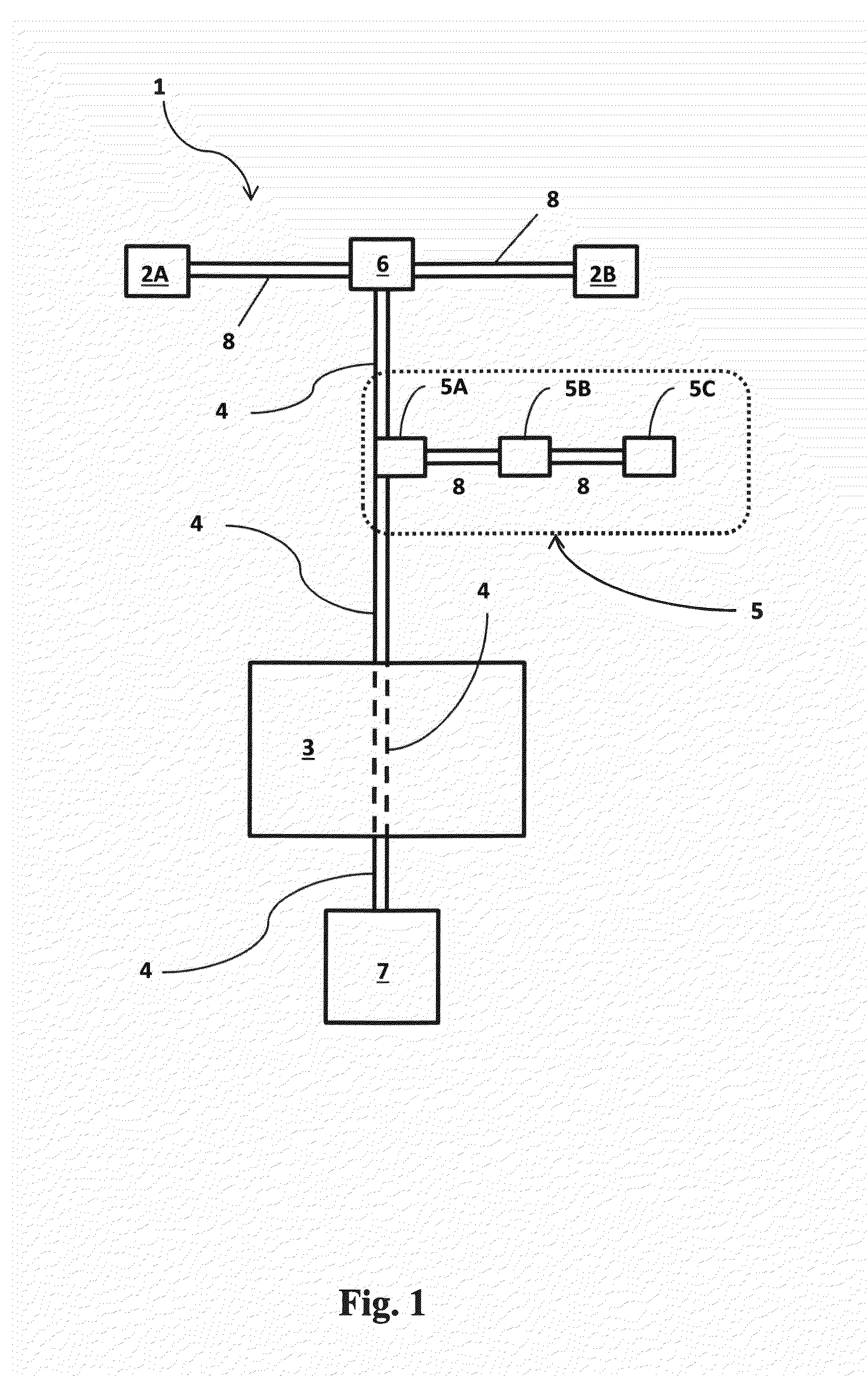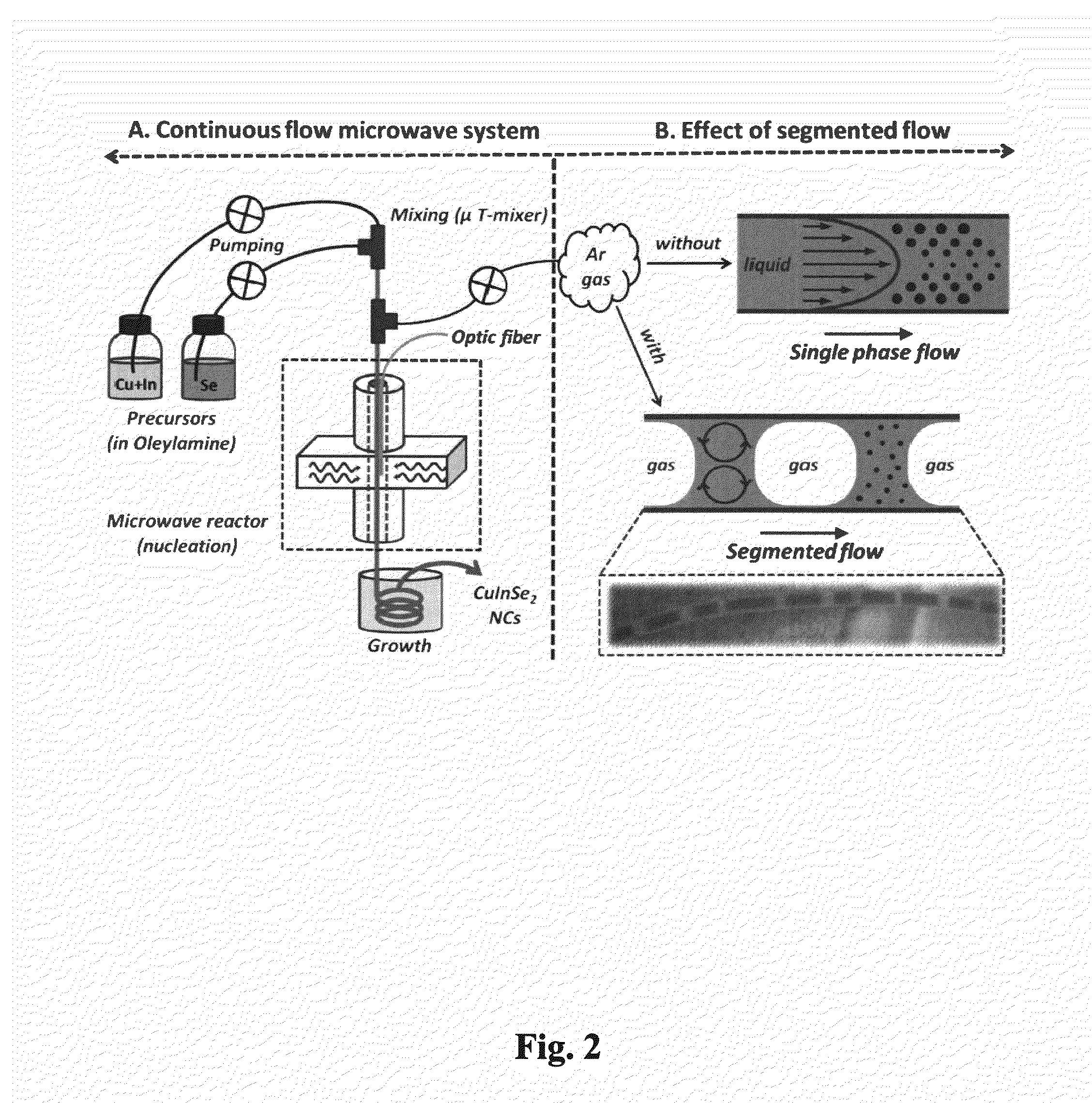Continuous microwave-assisted segmented flow reactor for high-quality nanocrystal synthesis
a nanocrystal and flow reactor technology, applied in the field of high-quality nanocrystal synthesis, can solve the problems of low production rate, low production rate, and inability to define vessel temperature and mass transfer characteristics, and achieve the effect of improving the synthesis efficiency and reducing the production cos
- Summary
- Abstract
- Description
- Claims
- Application Information
AI Technical Summary
Benefits of technology
Problems solved by technology
Method used
Image
Examples
example 1
Preparation of CuInSe2Nanocrystals Via Continuous-Flow Microwave Assisted Reactor
[0072]Chemicals.
[0073]Copper(I) chloride (CuCl, >90%), indium(III) chloride (InCl3, 99.99%), selenium powder (Se, 99.5%) were purchased from Alfa Aesar. Technical grade oleylamine (OLA, >70%) and anhydrous toluene (>99.5%) were delivered from Sigma-Aldrich and ACS grade of ethanol (>99.5%) from Macron chemicals. All chemicals were used as purchased without further purification.
[0074]Preparation of Precursors.
[0075]Two Media Storage Bottles (100 mL, KIMAX) with two holes were placed on individual hot plates; one hole was connected to a vacuum or purge line, and a thermocouple was inserted through the other hole to measure the temperature. A solution consisting of CuCl (1.32 mmol), InCl3 (1.32 mmol), and OLA (120 mL) in the first bottle was stirred under vacuum at 80° C. for 60 min, then purged with Ar gas (99.9999%) at 130° C. for 60 min while stirring. This solution was marked solution A. Meanwhile, Se ...
example 2
Synthesis of Colloidal PbSe Nanoparticles Using a Microwave-Assisted Segmented Flow Reactor
[0101]Lead selenide nanoparticles (PbSe NPs) are of considerable interest due to their large Bohr exciton radius (46 nm) and small direct bulk bandgap (0.28 eV). These properties make PbSe NPs useful for solar cells, photodetectors, and infrared emitters. The large Bohr exciton radius allows the optical properties of PbSe NPs to be tuned by controlling their size. Solution-based approaches for the synthesis of colloidal PbSe NPs include solvothermal, sonochemical, photochemical, pH induced precipitation, microwave-assisted, continuous flow, and hot injection methods. For these applications narrow PbSe NP size distributions are important, and hot injection techniques are most commonly used for synthesis of PbSe NPs.
[0102]In this study, a microwave-assisted segmented flow reactor was used to synthesize colloidal PbSe NPs. We have found that chemistries developed for hot injection methods can be ...
example 3
Microwave-Assisted Continuous Flow Synthesis of CuInS2 Quantum Dots and Subsequent Cation-Exchange and ZnS Shell Growth
[0118]Herein we describe a method for the production of CuInS2 QDs using a microwave-assisted continuous, segmented, flow reactor (MWCFR) (see FIG. 17) for nucleation followed by growth in a conventional heat bath. The resulting QDs underwent Zn cation exchange and a ZnS shell was grown on the surface resulting in a photoluminescence quantum yield (PLQY) of 65%.
[0119]Experimental.
[0120]Core QD Synthesis: All reagents were stored in a glovebox. 1.8 mmol CuI and 3.6 mmol In(ac)3 were dissolved in 47.5 g OLA, separately 7.2 mmol S powder was dissolved in 7.5 mmol diphenylphosphine (DPP) by heating to 50° C. in a N2 filled glove box. The diphenylphosphine sulphide (DPPS) was mixed with 46 g ODE and then added at room temperature to the OLA solution. The resulting precursor solution was pale yellow and was always used within 24 hours. The solution was placed in a three n...
PUM
 Login to View More
Login to View More Abstract
Description
Claims
Application Information
 Login to View More
Login to View More - R&D
- Intellectual Property
- Life Sciences
- Materials
- Tech Scout
- Unparalleled Data Quality
- Higher Quality Content
- 60% Fewer Hallucinations
Browse by: Latest US Patents, China's latest patents, Technical Efficacy Thesaurus, Application Domain, Technology Topic, Popular Technical Reports.
© 2025 PatSnap. All rights reserved.Legal|Privacy policy|Modern Slavery Act Transparency Statement|Sitemap|About US| Contact US: help@patsnap.com



